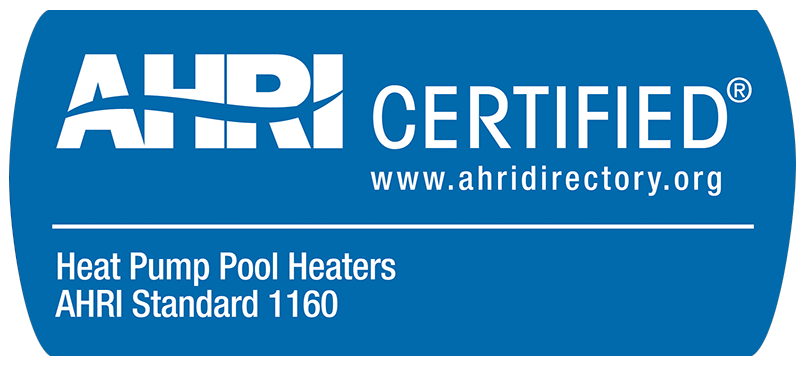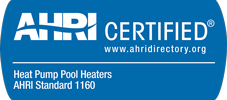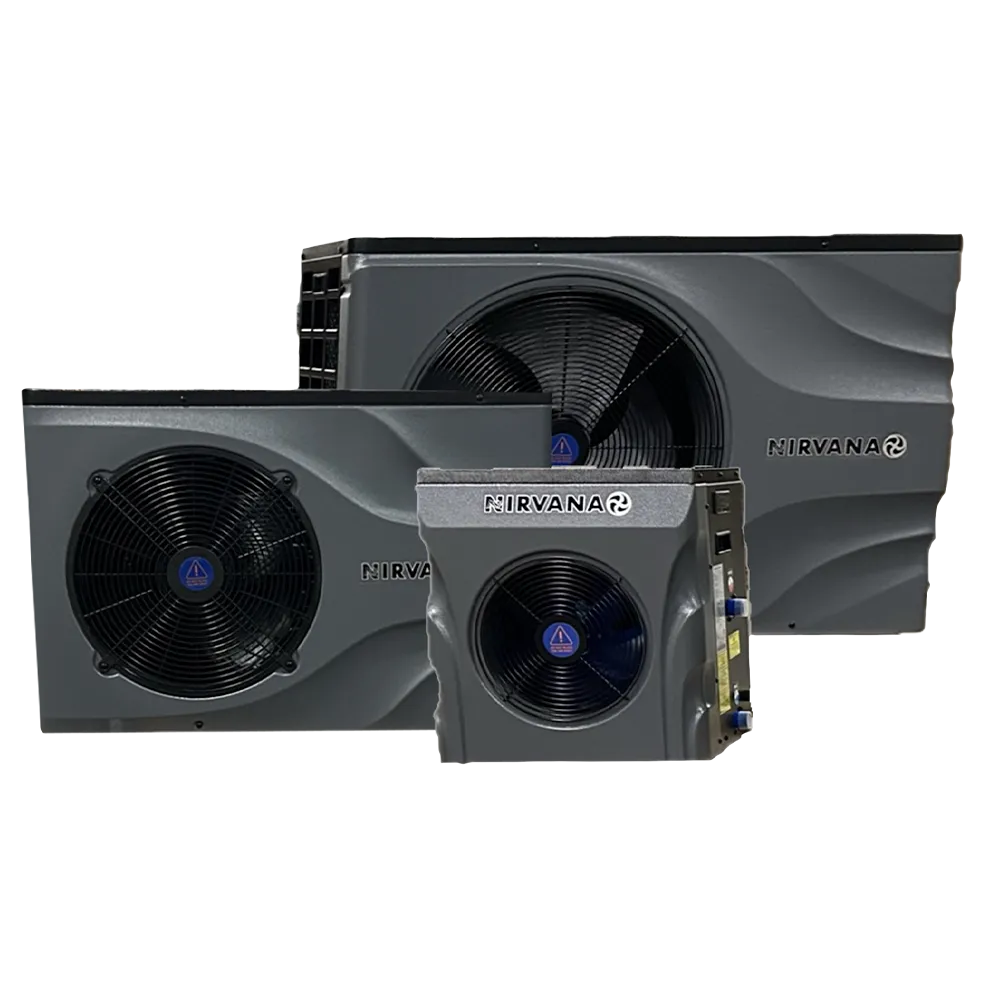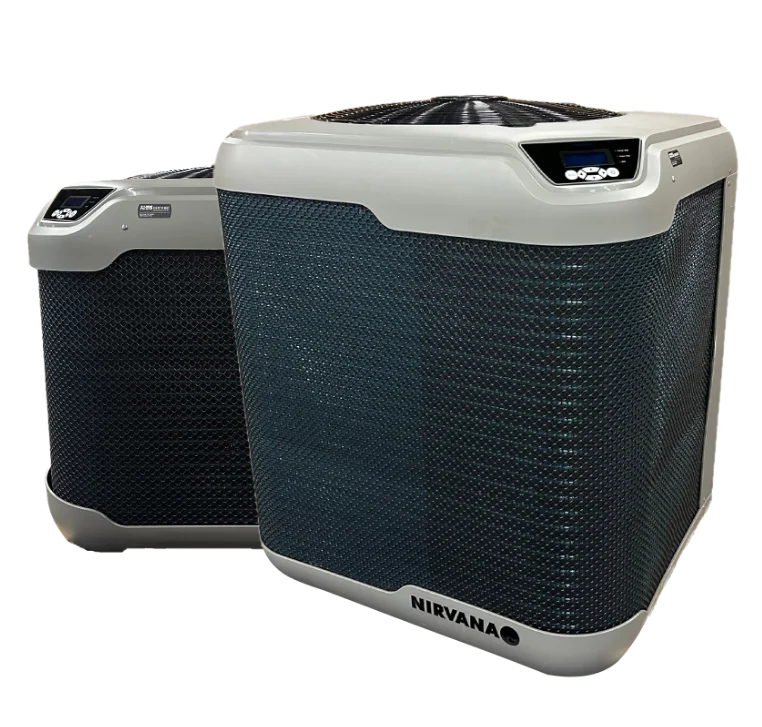
The Air-conditioning, Heatingand Refrigeration Institutebrings together nearly 350 manufacturers of air-conditioning, heating and refrigeration equipment in North America. The standards set by this association establish a basis for comparison between products and their standards, while certifying their performance.
In other words, AHRI certification is the only guarantee that the appliance’s performance, energy efficiency and capacity correspond to the specifications advertised by the manufacturer. This certification is particularly useful for :
- Ensuring quality: A guarantee of reliability and performance for consumers and professionals alike.
- Easier comparison: It makes it easier to compare different products on the basis of common standards.
- Guaranteeing energy efficiency: AHRI-certified products meet strict energy efficiency criteria, which can be important in reducing operating costs and environmental impact.
In short, AHRI certification helps establish performance tests and standards for air conditioning, heating and refrigeration equipment, ensuring their reliability and energy efficiency.
AHRI certification offers several key benefits for manufacturers and users of HVAC (air conditioning, heating and refrigeration) equipment:
- Independent performance validation: This certifies that the equipment has been tested to exacting standards, guaranteeing that the claimed performance is real and in line with industry standards.
- Increased consumer confidence: For customers, seeing the AHRI label is a guarantee of quality and reliability, making it easier to make a purchasing decision.
- Objective product comparison: Common standards make it easier to compare different equipment and choose the one that best suits your needs.
- Compliance with energy efficiency standards: Certification ensures that equipment is energy-efficient, which can reduce operating costs and help protect the environment.
- Marketing advantage and differentiation: For a manufacturer, having an AHRI-certified product can be an important selling point, setting them apart in a competitive market.
In short, AHRI certification demonstrates the reliability and efficiency of a product, reinforces user confidence and meets the demands of a market increasingly focused on energy performance and quality.
80/80/80
Means 80F ambient temperature, 80% relative humidity and 80F water temperature. These conditions may reflect daytime conditions during summer in Quebec.
50/63/80
Means 50F ambient temperature, 63% relative humidity and 80F water temperature. These conditions may reflect night-time conditions during summer in Quebec.
Low-temperature BTU capacity is very important, enabling you to heat at the beginning and end of the season (extending the swimming season) and maintain water temperature overnight.
What is the COP (Coefficient of Performance)?
The COP(Coefficient of Performance) is a key indicator that measures theenergy efficiency of your heat pump. It corresponds to the ratio of heat produced toelectricity consumed.
This figure is important, as it enables you toassess the performance of the appliance,estimate your operating costs and better understand your energy consumption.
For example, a COP of 4 means that for every kilowatt of electricity used, the heat pump generates four kilowatts of heat to heat the pool water.
It’s good to know that COP can vary according to a number of factors, such as outdoor temperature, water temperature,relative humidity and the flow rate of water circulating inside the heat pump. Heat pumpmaintenance and installation quality can also affect COP.
In short, a high COP indicates an efficient heat pump, but you also need to take into account actual operating conditions to properly assess your system’s overall performance.
The addition of a solar blanket is recommended to prevent evaporation, which ultimately leads to additional heating costs!
Did you know?
COP also means your heating cost, so the higher the COP, the lower your heating cost. Incidentally, the lower the COP, the higher your heating costs.

How to calculate the COP
of a pool heat pump?
Thermal energy supplied (Q): Heat actually transmitted to the pool water, measured in kW according to temperature rise and water volume.
Electrical energy consumed (W): Electricity used by the heat pump, in kW, as read on a meter or in the technical specifications.
To calculate the COP (Coefficient of Performance) of a pool heat pump, simply divide the amount of heat actually delivered to the water (expressed in kW) by the amount of electricity consumed by the unit (also in kW).
For example, if a heat pump delivers 4 kW of heat for 1 kW of electricity used, its COP is 4. The heat produced is measured in terms of the increase in water temperature, while electricity consumption can be read off a meter or in the technical specifications.
Bear in mind, however, that COP varies according to actual conditions (air and water temperature), even if manufacturers calculate it under standard conditions.
Does a higher COP
guarantee better energy savings?
A high COP indicates good theoretical performance from a heat pump, but does not always guarantee energy savings in practice.
Actual efficiency also depends on conditions of use, installation, maintenance and correct equipment sizing.
- Actual vs. test conditions: COP is often measured under ideal conditions that do not always reflect actual operating conditions (outdoor temperature, water temperature, etc.).
- Sizing: A system properly sized for your needs will optimize its performance. A poorly adapted unit loses efficiency.
Installation and maintenance: Careful installation and maintenance ensure optimum performance. - Use: The effectiveness of the appliance also depends on your habits (frequency, duration, target temperature).
What is a BTU (British Thermal Unit)?
In the context of a pool heat pump, BTUs represent theunit of measurement for the amount of heat the unit can transfer to the water.
Did you know?
The BTU reflects the heating capacity according to the volume of water. To make the right choice, multiply your pool’s liters by 1.3 (recommended) or 1.5 (optimized).

- Heating capacity: The capacity of a heat pump, expressed in BTU/h, indicates the amount of heat it can transfer in one hour. The higher the number, the faster the heating.
- BTU definition: 1 BTU corresponds to the energy required to heat one pound of water by one degree Fahrenheit (≈1055 joules). This unit remains common in heating and air conditioning.
- Use to size equipment: The number of BTU/h is used to check whether the heat pump is suitable for the size of the pool and heat losses (fresh air, evaporation, etc.).
- Relationship to energy efficiency: BTUs indicate heating capacity, while COP measures energy efficiency, i.e. heat produced in relation to electricity consumed.
BTUs indicate the heat delivered by the appliance, helping to choose a suitable model and estimate the heating speed.
Does choosing a higher BTU mean better energy savings?
Opting for a heat pump with a higher BTU capacity than recommended does not necessarily guarantee better energy savings.
- Short cycles and inefficiency: An oversized unit can heat the pool too quickly, resulting in frequent start/stop cycles. These short cycles prevent the heat pump from operating under optimal conditions, which can reduce its overall efficiency and increase energy consumption.
- Increased wear: Frequent cycling can also accelerate component wear, reducing the life of the device and potentially increasing maintenance costs.
- Optimum sizing: It’s best to choose a heat pump whose capacity is precisely matched to your pool’s heating requirements, taking into account water volume, climatic conditions and heat losses. Correct sizing enables the unit to operate continuously and efficiently, ensuring better energy efficiency.
What is the COP (Coefficient of Performance)?
The COP(Coefficient of Performance) is a key indicator of theenergy efficiency of thermal systems, such as heat pumps, air conditioners or boilers.
Here are a few key points to help you understand this concept:
- Definition: The COP is the ratio between the useful energy produced (heat or cooling) and the energy consumed by the system. It is generally calculated by the formula: COP = Energy produced / Energy consumed.
- Interpretation: A high COP means that the system is highly efficient, producing more useful energy per unit of energy consumed. For example, a COP of 3 means that for every kilowatt of electricity consumed, the system delivers three kilowatts of heat or cold.
- Usefulness: COP allows you to compare the energy efficiency of different appliances. It helps to estimate operating costs and environmental impact, since more efficient systems consume less energy to provide the same service.
- Influential factors: COP may vary depending on operating conditions, such as outdoor temperature, desired ambient temperature and other operating parameters.
In short, COP is an essential metric for assessing a system’s energy performance, providing a clear picture of its economic and environmental efficiency and effectiveness.
How do I calculate the COP of a pool heat pump?
Thermal energy supplied (Q): This is the heat actually delivered to the pool water, expressed in kilowatts (kW). It can be measured by evaluating the increase in water temperature over a given period, taking into account the volume of water and its thermal properties.
Electrical energy consumed (W): This is the electrical power used by the heat pump to operate, also expressed in kW. This value is often found on the electricity meter or specified in the unit’s technical specifications.
To calculate the COP (Coefficient of Performance) of a pool heat pump, use the following formula:
COP = Thermal energy supplied (Q) / Electrical energy consumed (W)
The calculation is made by dividing the amount of heat supplied by the amount of electricity consumed.
For example, if a pool heat pump supplies 4 kW of heat while consuming 1 kW of electricity, then:
COP = 4 kW / 1 kW = 4
This means that for every kilowatt of electricity consumed, the heat pump delivers 4 kilowatts of heat to the pool.
It’s important to note that COP varies according to actual operating conditions, such as water temperature and ambient temperature. For standardized comparisons, manufacturers generally measure COP under defined reference conditions.
Does a higher COP guarantee better energy savings?
A higher COP indicates that, theoretically, the heat pump is better at converting electrical energy into heat. This means that, under standard conditions, it produces more heat per kilowatt of electricity consumed. However, this does not automatically guarantee better energy savings in practice, as several other factors come into play:
- Actual vs. test conditions: COP is often measured under ideal conditions that do not always reflect actual operating conditions (outdoor temperature, water temperature, etc.).
- Unit sizing: A system properly sized for your needs will optimize its performance. An oversized or undersized unit can result in frequent start/stop cycles, affecting overall efficiency.
- Installation and maintenance: Correct installation and regular maintenance are essential to keep your heat pump operating at peak efficiency.
- Overall use: Usage habits, cycle frequency and temperature management also influence energy efficiency.
A higher COP is a good indicator of theoretical performance, but to achieve better energy savings, you need to consider the overall system and operating conditions.
What is a BTU (British Thermal Unit)?
The BTU (British Thermal Unit) is a unit of measurement for energy.
More precisely, it corresponds to the amount of energy required to raise the temperature of a pound of water by 1 degree Fahrenheit.
Here are a few key points to help you understand this concept:
- Origin and definition: The BTU is a traditional unit used mainly in the USA to measure heat. It is used to quantify the thermal energy required for certain transformations, such as heating or cooling a space.
- Conversion to SI units: 1 BTU is equivalent to approx. 1055 joules, so it can be compared with the energy units of the international system.
- HVAC applications: In the heating, air-conditioning and refrigeration sectors, BTUs are commonly used to express the capacity of equipment. For example, the capacity of an air conditioner or boiler is often indicated in BTUs, making it easier to compare different models.
In short, the BTU is a practical measure for evaluating and comparing the amount of thermal energy involved in various processes, particularly in the field of thermal comfort and energy efficiency.
In the context of a pool heat pump, BTUs are theunit of measure for the amount of heat the unit can transfer to the water.
Here’s how they work:
- Heating capacity: The capacity of a heat pump is often expressed in BTU per hour (BTU/h). This means that the unit can deliver, for example, 100,000 BTU/h, i.e. transfer enough heat to raise the temperature of a given quantity of water in one hour. The higher the number of BTU/h, the faster the heat pump is able to heat the pool.
- BTU definition: One BTU is the energy required to raise the temperature of one pound of water by one degree Fahrenheit (about 1055 joules). Although the metric system is widely used elsewhere, the BTU remains a common unit in heating and air-conditioning.
- How to size your equipment: Knowing the BTU/hr of a heat pump will help you determine whether the unit is right for the size and volume of your pool. Indeed, to heat your pool efficiently, the BTU capacity must be sufficient to compensate for heat loss due to ambient conditions, such as outside temperature and evaporation.
- Relationship to energy efficiency: It’s important to distinguish heating capacity (expressed in BTUs) from energy efficiency, often measured by the Coefficient of Performance (COP). While BTUs indicate how much heat the unit can produce, COP evaluates the ratio of heat generated to electrical energy consumed.
BTUs are used to quantify the amount of heat the appliance is capable of delivering, enabling users to choose a model suited to their needs and predict how quickly the water temperature can be raised.
Does choosing a higher BTU mean better energy savings?
Opting for a heat pump with a higher BTU capacity than recommended does not necessarily guarantee better energy savings.
Here’s why:
- Short cycles and inefficiency: An oversized unit can heat the pool too quickly, resulting in frequent start/stop cycles. These short cycles prevent the heat pump from operating under optimal conditions, which can reduce its overall efficiency and increase energy consumption.
- Increased wear: Frequent cycling can also accelerate component wear, reducing the life of the device and potentially increasing maintenance costs.
- Optimum sizing: It’s best to choose a heat pump whose capacity is precisely matched to your pool’s heating requirements, taking into account water volume, climatic conditions and heat losses. Correct sizing enables the unit to operate continuously and efficiently, ensuring better energy efficiency.
For real energy savings, it’s best to stick to the sizing recommendations, rather than opting for a higher BTU capacity, which could actually reduce system efficiency.





